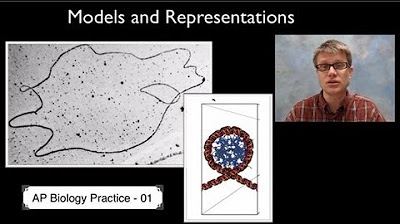APES Video Notes 1.1 - Ecosystems
Summary
TLDRIn this introductory AP Environmental Science video, Mr. Smith explores the dynamics of ecosystems, focusing on species interactions. He explains the basics of ecosystems, including individuals, populations, communities, and biomes. The video delves into various relationships such as predation, symbiosis, and competition, emphasizing how resource availability influences these interactions. It also discusses different types of symbiotic relationships and strategies like resource partitioning that reduce competition among species, allowing for a more balanced ecosystem.
Takeaways
- 🌿 **Ecosystem Basics**: An ecosystem includes both living organisms and nonliving components such as rocks, soil, and water.
- 🐾 **Individual to Biome**: The script explains the progression from an individual organism to a population, community, ecosystem, and finally to a biome.
- 🔍 **Species Interactions**: It covers how resource availability influences species interactions, including predator-prey relationships and symbiosis.
- 🐊 **Predation**: Predation is defined as one organism using another for food or energy, and it's not limited to carnivores but includes herbivores as well.
- 🌱 **Mutualism**: Mutualism is a symbiotic relationship where both species benefit, like the coral reef ecosystem where coral and algae support each other.
- 🐦 **Commensalism**: Commensalism is a relationship where one species benefits while the other is unaffected, such as birds nesting in trees.
- 🐛 **Parasitism**: Parasitism involves one organism drawing energy from another, often without killing the host, unlike parasitoids which kill the host after using it.
- 🌳 **Resource Partitioning**: Resource partitioning reduces competition by allowing species to use shared resources in different ways, such as temporal, spatial, or morphological partitioning.
- 📚 **Describing Environmental Concepts**: The script emphasizes the skill of describing environmental concepts, such as explaining how resource partitioning can occur in a food web.
- 🎓 **AP Environmental Science**: The video is part of a series of flipped video notes for AP Environmental Science, aiming to help students understand complex ecological concepts.
Q & A
What is the main objective of the lesson in the video?
-The main objective of the lesson is to explain how resource availability influences species interactions, such as predation, competition, and symbiosis.
What are the different levels of organization within an ecosystem as mentioned in the video?
-The different levels of organization are individual, population, community, ecosystem, and biome.
What is the definition of an ecosystem provided in the video?
-An ecosystem includes all the living organisms in an area (community) and the nonliving components (such as rocks, soil, and water) that interact with them.
How is competition described in the context of species interactions?
-Competition is a lose-lose situation where organisms fight over shared resources like food or shelter, limiting their population size due to scarcity of resources.
What is the difference between predation and parasitism?
-Predation involves one organism using another as an energy source, often killing it, while parasitism involves one organism drawing energy from another without necessarily killing it.
How is mutualism defined in the video?
-Mutualism is a relationship where both species benefit, such as the interaction between coral and algae, where coral provides CO2 for algae and algae provide sugars for coral.
What is commensalism and provide an example from the video?
-Commensalism is a relationship where one species benefits and the other is not affected. An example is birds making nests in trees without harming or benefiting the tree.
What are the three types of resource partitioning described in the video?
-The three types of resource partitioning are temporal partitioning (using resources at different times), spatial partitioning (using different areas of the same resource), and morphological partitioning (evolving different physical traits to use the same resource).
What example is provided to explain morphological partitioning?
-Morphological partitioning is exemplified by the ferret and ermine, which have evolved different jaw sizes and tooth patterns to hunt for different-sized prey, reducing direct competition.
How does the video describe the concept of symbiosis?
-Symbiosis is a long-term interaction between two organisms of different species living in close association. This can be mutualistic, commensal, or parasitic.
Outlines

Cette section est réservée aux utilisateurs payants. Améliorez votre compte pour accéder à cette section.
Améliorer maintenantMindmap

Cette section est réservée aux utilisateurs payants. Améliorez votre compte pour accéder à cette section.
Améliorer maintenantKeywords

Cette section est réservée aux utilisateurs payants. Améliorez votre compte pour accéder à cette section.
Améliorer maintenantHighlights

Cette section est réservée aux utilisateurs payants. Améliorez votre compte pour accéder à cette section.
Améliorer maintenantTranscripts

Cette section est réservée aux utilisateurs payants. Améliorez votre compte pour accéder à cette section.
Améliorer maintenantVoir Plus de Vidéos Connexes

Solid Waste

AP Daily: AP Environmental Science (1.1)

AP Environmental Science Unit 2 Review (Everything you Need to Know!)

AP Biology Practice 6 - Scientific Explanations and Theories

How to Write the Experimental Design FRQ on the AP Environmental Science Exam

AP Biology Science Practice 1: Models and Representations
5.0 / 5 (0 votes)
